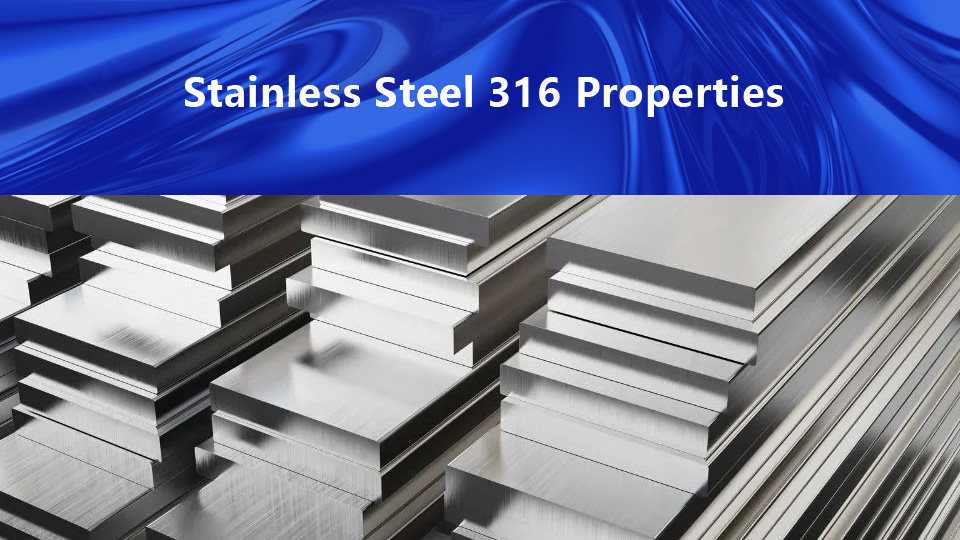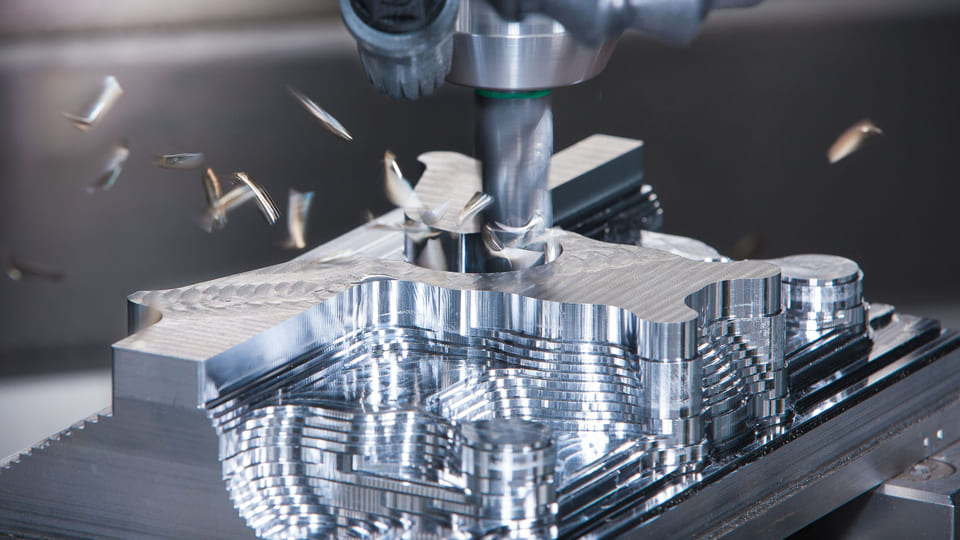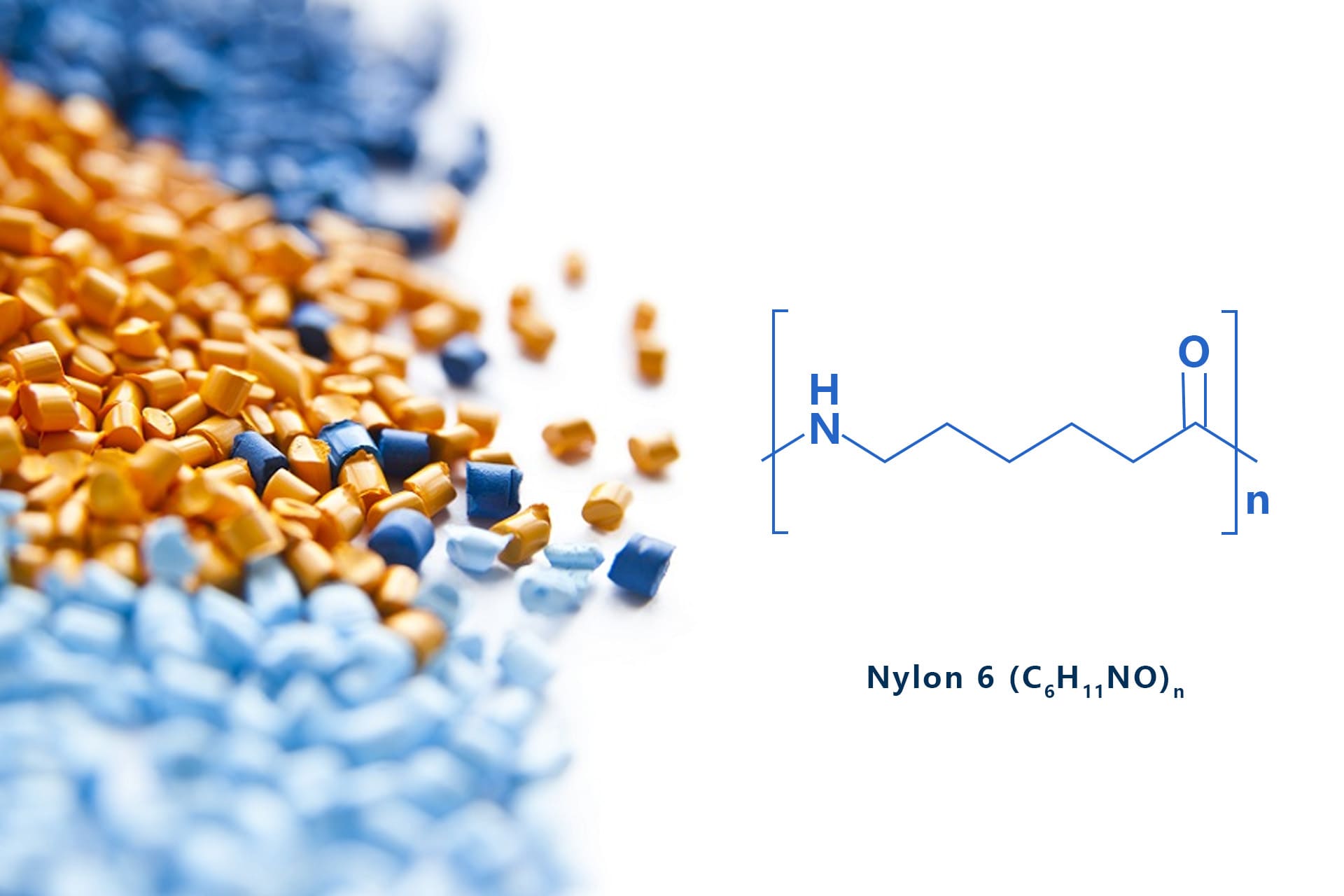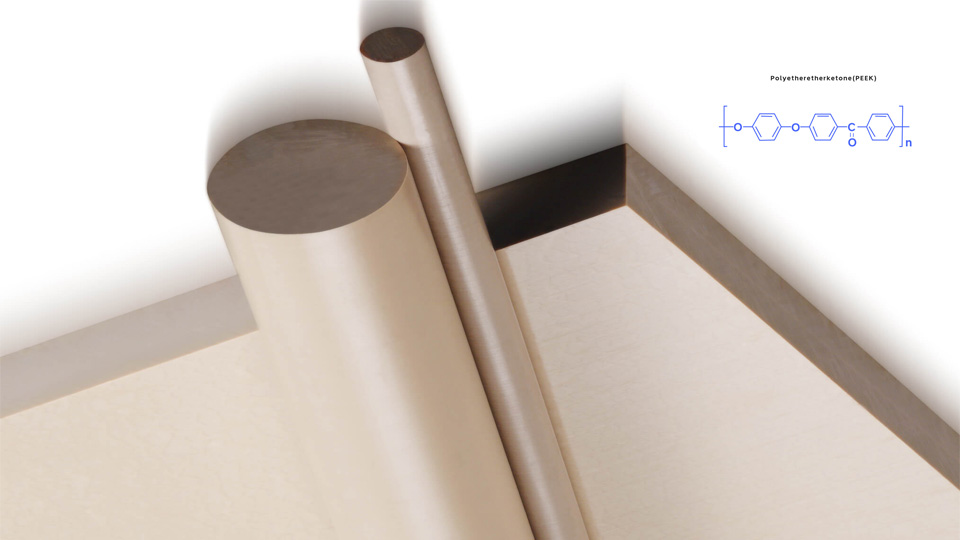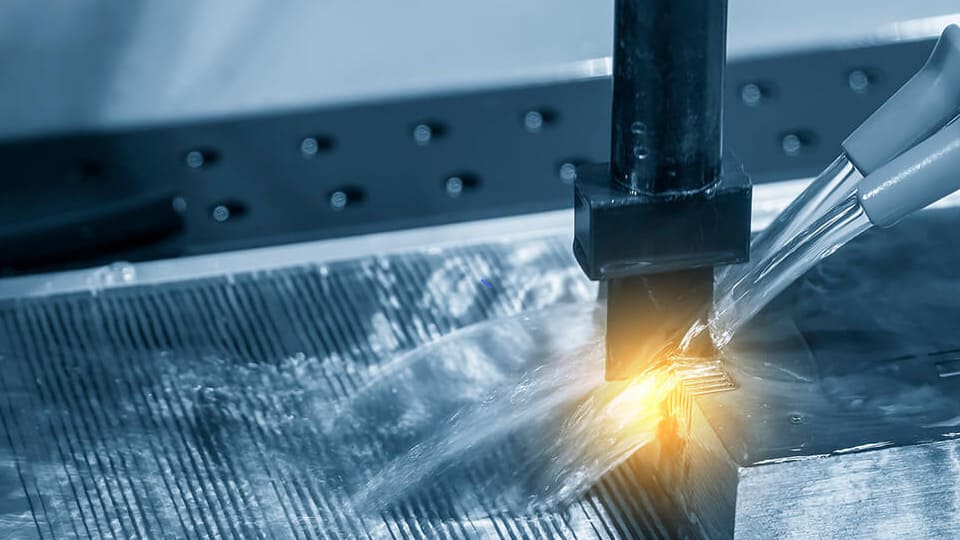Due to the excellent combination of chemical stability, mechanical strength and corrosion resistance, 316 stainless steel becomes an indispensable material in many severe environment applications. 316 stainless steel has been widely used in marine, medical, food and chemical parts, all have demonstrated its mechanical strength in harsh environments. Compared with 304 stainless steel, it has obvious advantages when in contact with chlorides or acidic media. In addition, its life span also provides clear advantages for the whole life cycle towards safety, hygiene and maintenance cost.
With the industry standard to raise the bar in quality and environmental exposure, and cost constraints, 316 stainless steel properties will be increasingly demanded. The proper choice of material always means meeting technical requirements in view of the environmental exposure and cost, and 316 stainless is premium.
Composition of 316 Stainless Steel
What makes 316 stainless steel chemically different is the addition of molybdenum. The main difference between 316 stainless steel and 304 stainless steel is that 304 stainless steel’s main alloying elements are chromium and nickel, while 316 stainless steel has 2-3% molybdenum. This 2-3% makes a huge difference: the corrosion resistance of 316 stainless steel is greatly improved, especially in chloride-containing solutions such as seawater or chemical plants.
The chemical composition of 316 stainless steel is as follows:.
| Element | Percentage(%) |
| Chromium (Cr) | 16.0-18.0 |
| Nickel (Ni) | 10.0-14.0 |
| Molybdenum (Mo) | 2.0-3.0 |
| Carbon (C) | ≤ 0.08 |
| Manganese (Mn) | ≤ 2.0 |
| Silicon (Si) | ≤ 1.0 |
| Phosphorus (P) | ≤ 0.045 |
| Sulfur (S) | ≤ 0.03 |
| Nitrogen (N) | ≤ 0.10 |
| Iron (Fe) | Balance |
As we can see, each element has its own function: chromium can build the passive oxide layer to prevent rust; nickel can make the structure of austenite stable to ensure the toughness of stainless steel at low temperature; molybdenum can improve the ability of pitting corrosion and crevice corrosion; all these elements together are the basis of 316 stainless steel properties.
Properties of 316 Stainless Steel
Below is a table showing the main properties of 316 stainless steel:
| Property | Value (Typical) |
| Tensile Strength | 515–750 MPa |
| Yield Strength | ~205 MPa |
| Brinell Hardness | ~149 HB |
| Rockwell Hardness | ~80 HR |
316 Stainless Steel Tensile Strength
The tensile strength of 316 stainless steel is typically between 515 and 750 MPa, according to the condition and the degree of cold working. The large range indicates that the material can tolerate a lot of pulling or stretching force before breaking. When structures in use, or applied in situations where applying pulling or stretching forces will be either intermittent or continuous over a person’s lifetime—like in chemical facilities, tanks, ships rigging, and so on— the long-term strength of 316 stainless steel provides peace of mind knowing that breaking or fracture is not going to occur.
Yield Strength of 316 Stainless Steel
Yield strength of 316 stainless steel usually sits at about 205 MPa for an annealed condition. This is the stress at which 316 begins to deform permanently. Below this point, 316 springs back to its original shape when the stress is lifted. Once that deformation threshold is passed, it remains permanently deformed. When engineers choose materials for pressure-containing or load-carrying applications where accuracy and life are important, yield strength is one of the first material properties they consider.
Hardness of 316 Stainless Steel
The hardness rating of 316 stainless steel reaches 149 HB which confirms its combination of strength and workmanship capacity. Rockwell hardness of Stainless steel 316 demonstrates 80 HR as the typical measurement for stainless steel analysis. Due to its hardness level, the material delivers resistance against moderate wear together with formability for machining operations. Stainless steel grade 316 finds advantageous use in pharmaceutical processes and marine equipment and building construction due to its ability to maintain both high durability through hardness and easy fabrication from its ductility properties.
These mechanical properties tie together the skeleton of 316 stainless steel properties, giving credence to the metal’s ability to perform at levels of stress, pressure and time.
Density of 316 Stainless Steel
The density of 316 stainless steel is 7.98 g/cm³, which is fairly heavy when compared to other many non-ferrous alloys. This, along with other properties, gives this metal its high-strength under pressure characteristics. Anyone designing parts that must carry weight, like parts used in space and maritime crafts, ships, and buildings, will need to take the weight of the part, along with the density, into account when doing calculations. Both the ratio of mass to volume and mechanical calculations are important to those doing calculations as well as to those involved in shipping and handling issues like heat inertia.
Thermal Conductivity
At a temperature of 100°C, the thermal conductivity of 316 stainless steel is around 16.3 W/m·K. This value is much lower than that of aluminum or copper. In other words, the 316 alloy conducts heat much more slowly. In some cases of thermal management, this characteristic may be advantageous, and in some other cases, it may be a drawback. It is always helpful to know how the 316 steel properties concerning thermal behavior can be fully exploited.
Corrosion Resistance of 316 Stainless Steel
316 stainless steel, also known as marine stainless steel, contains 2–3% molybdenum, an essential alloy element that makes it significantly better at resisting pitting and crevice corrosion compared to 304 stainless steel. This kind of corrosion often happens in chloride-containing atmospheres like seaside areas, chemical plants, swimming pool facilities, etc.
316 stainless steel will experience much less corrosion than 304 stainless steel when hardware is exposed to saltwater or deicing compounds. For instance, in marine hardware, offshore platforms, and shipbuilding products, stainless steel will always be used because it won’t be able to be protected from seawater exposure. 316 stainless steel’s better corrosion resistance extends the service life of seawater exposed products.
Unlike 304 stainless steel, which doesn’t contain molybdenum, 316 stainless steel has a stronger resistance against aggressive chemicals. Although 304 stainless steel can be used in indoor or mildly corrosive environments, it will pit and rust faster than 316 stainless steel when it is exposed to chlorides, acids or high humidity. 316 stainless steel can be used in contact with sodium hypochlorite, sulfur dioxide and acetic acid. Most chemical reactors, storage tanks and piping systems are manufactured with 316 stainless steel.
Pharmaceutical industry sterilizing agents and strong cleaning chemicals will not damage 316 stainless steel equipment. Products manufactured with 316 stainless steel won’t cause material breakdown, and also help retain hygienic surfaces during drug and bio-processing manufacturing processes.
To sum up, whether you use 316 stainless steel in marine engineering, coastal buildings or process equipment, its corrosion resistance justifies the higher price and makes it one of the most corrosion resistant austenitic stainless steels.
Is 316 Stainless Steel Magnetic?
Annealed in its brightest annealed condition, 316 is non-magnetic. Austenite, the microstructure of austenite, is a face-centered cubic (FCC) crystal that is inherently non-magnetic, so 316 is a great choice for applications where low magnetic permeability is important, such as electronic enclosures or housings for MRI equipment.
Cold working alters that scenario. Cold finishing processes such as rolling, bending, and deep drawing work harden the metal and cause portions of the austenite to transform to a magnetic phase, martensite. Consequently, cold-worked 316 stainless steel may be slightly magnetic. The more cold work the metal undergoes, the more magnetic it becomes.
Yet even cold-worked 316 is still less magnetic than a ferritic or martensitic grade. If you have a handheld magnet, it may lift slightly, but it won’t stick. For most practical purposes, especially if magnetism is an issue, most would still consider 316 “non-magnetic.”
To further ensure there is no magnetic attraction at all, the metal fabricator can return the 316 stainless steel to its non-magnetic condition by putting it through a full solution annealing heat treatment. That process dissolves the martensitic fields.
In summary, the answer to the question, “Is 316 stainless steel magnetic?” depends on the condition of the 316 stainless steel. In its annealed form, it will show little or no magnetism. In its cold-worked form, it may become slightly magnetic, but not so magnetic as to render it unsuitable for precision or medical grade applications.
Will 316 Stainless Steel Rust?
Although 316 stainless steel offers good corrosion resistance, nothing is completely resistant to rusting in every possible situation. When chloride content is high, as in seawater or brine solutions, a surface oxide can still form–provided the passive chromium oxide film isn’t scratched or wiped with contaminants.
Carbon steel rusts quickly when exposed to moisture. 316, however, has a more robust oxide film that can protect the surface and heal itself from further corrosion. Still, persistent exposure to hydrochloric acid, sulfur dioxide, or stagnant sea water can eventually strip away 316’s protective shell, leaving behind pitted corrosion in hard-to-clean crevices and welded joints.
Here are some basic care tips to help you maintain 316 stainless steel properties.
- Wipe down with fresh water to dissolve chloride deposits and rinse away particulates from airborne sources. This also helps to maintain passivity on the stainless steel surface.
- Keep away from other metals. Stainless steel components placed in contact with dissimilar metals such as iron or aluminum, will corrode the other metal faster in an electrolyte solution.
- A passivation treatment such as a nitric acid bath restores the chromium layer that was lost and provides a further layer of protection against corrosion.
They do exist, but 316 stainless steel properties are much more likely to resist rusting than most other stainless grades, especially grade 304. When operating in marine, chemical and pharmaceutical environments, engineers have come to expect the extra stability of 316 in corrosive environments.
316 vs 316L Properties
Even though 316 and 316L stainless steels are members of the same family, a relatively large variation in performance in punishing service conditions results from a relatively small change in chemical composition. The difference involves carbon. 316 has a carbon maximum of 0.08%, while 316L features a carbon maximum of 0.03%. That small difference makes a big difference.
The lower carbon content in 316L deters carbide precipitation when the metals are welded, in turn reducing intergranular corrosion in the heat-affected zone. Product designers and fabricators select 316L when they need both durability and weldability without compromise.
Here’s a snapshot comparison showing the most important differences.
| Property | 316 Stainless Steel | 316L Stainless Steel |
| Carbon Content | ≤ 0.08% | ≤ 0.03% |
| Intergranular Corrosion Resistance | Moderate (needs post-weld treatment) | Excellent (no post-weld treatment needed) |
| Weldability | Good, but can suffer grain boundary attack | Excellent for welding-heavy applications |
| Strength | Slightly higher | Slightly lower due to reduced carbon |
| Common Applications | Chemical processing, marine fittings | Pharmaceutical equipment, pressure vessels |
As far as performance and reliability, both grades share many of the basic 316 stainless steel properties, including high levels of corrosion resistance and good mechanical strength. But when the metal is welded or it’s exposed to corrosive environments, 316L provides a safer, more stable long-term performance. Fabricators in the food, medical and nuclear industries frequently make 316L their first-line choice because of its greater purity and performance under thermal stress.
Stainless Steel 316 Applications
Due to its strong corrosion resistance, 316 stainless steel is widely used in many different industries. 316 stainless steel has molybdenum in it, so it’s much stronger.
Medical Devices and Implants: The medical field often uses 316L stainless steel, which is a kind of 316 stainless steel with low carbon. Medical steel is widely used in medical devices and orthopedic implants, which require high anti-corrosion performance. Medical instruments made of 316 stainless steel are suitable for surgical instruments, orthopedic implants and cardiovascular devices, such as stents and heart valves. 316 stainless steel is not reactive, which ensures the safety of patients and the service life of medical instruments.
Marine Constructions: Marine constructions are prone to corrosion by seawater. 316 stainless steel is widely used in boat fittings, offshore platforms and underwater pipes.
Chemical Storage Tanks and Pipes: Chemical plants make use of 316 stainless steel in manufacturing equipment for resistance to corrosive media. Chemical plants can use 316 stainless steel in building acid and alkali tanks, reactors and pipes.
Buildings and Structures: Due to its good appearance, performance and resistance to environment, 316 stainless steel is widely used in building facades, handrails and decorations, especially in coastal areas where the steel is susceptible to corrosion by salt.
Conclusion
Due to the excellent combination of chemical stability, mechanical strength and corrosion resistance, 316 stainless steel becomes an indispensable material in many extreme environment applications. In marine, medical, food and chemical environment applications, 316 stainless steel’s performance shows its mechanical strength in many harsh environment applications. Compared with 304 stainless steel, with molybdenum added, it has a very obvious advantage when contacting with chloride or acid media. The life of 316 stainless steel is not only durable, but also ensures safety, hygiene and low maintenance cost. With the industry’s increasing demand for higher requirements and environmental protection, the demand for 316 stainless steel will be even higher. Always, we need to choose the right material according to the technical requirements, the environmental conditions and the budget, and 316 stainless is premium.
About SogaWorks
SogaWorks is an all-in-one online platform for custom mechanical parts, connecting over 1,000 top-tier factories to serve startups and major companies. We offer flexible manufacturing solutions for rapid prototyping, small-volume testing, and large-scale production with services like CNC machining, 3D printing, sheet metal fabrication, urethane casting, and injection molding. With our AI-powered quoting engine, SogaWorks can deliver quotes in 5 seconds, match the best capacity, and track every step. This cuts delivery times and boosts product quality.
